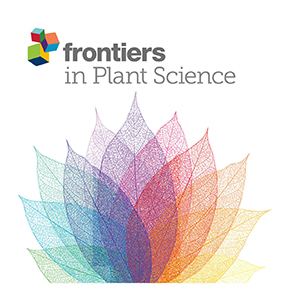-
21 Jan 2025 • Journal Article • Physiologia Plantarum
The Plant Ionome as a Functional Trait: Variation across Bioclimatic Regions and Functional Groups
AbstractPlant chemical composition is a trait gaining increasing importance in plant ecology. However, there is limited research on the patterns and drivers of its variation among different plant functional groups and bioclimatic regions. We conducted an analysis of ionomes utilising X-ray fluorescence on 83 plant species from four distinct functional groups (grasses, legumes
… show more -
25 Oct 2024 • Journal Article • Frontiers in Plant Science
Ecotypic differentiation of leaf silicon concentration in the grass Brachypodium hybridum along a rainfall gradient
AbstractEcotypic differentiation, reflected in substantial trait differences across populations, has been observed in various plant species distributed across aridity gradients. Nevertheless, ecotypic differentiation in leaf silicon concentration, known to alleviate drought stress in plants, remained hardly explored. Here, we provide a systematic test for ecotypic differentiation
… show more -
1 Jul 2024 • Journal Article • Ecosphere
Plant silicon content as a proxy for understanding plant community properties and ecosystem structure
AbstractSilicon (Si) content in plant tissues is considered a functional trait that can provide multiple morpho-physiological benefits to plant individuals. However, it is still unclear whether and how these individual benefits extend to plant community processes and ecosystem functioning. Here we investigated how plant Si content is associated with plant community properties
… show more -
Apr 2024 • Journal Article • Flora
Biogeography of a multifunctional trait: Spiny plant species in the flora of Israel and the Palestinian Authority
AbstractFunctional biogeography is the discipline that studies the geographic distribution of organismal traits and their relationships with environmental conditions and ecosystem functioning. Trait multifunctionality can be a major challenge in such analyses, so deciphering trait geographic distributions from functions is not always straightforward. We studied spinescence in
… show more -
21 Aug 2023 • Journal Article • Land
Long-Term Monitoring of Tree Population Dynamics in Desert Ecosystems: Integrating Field and Satellite Data
AbstractArid environments are characterized by rare rain events that are highly variable, as a result of which plant populations often exhibit episodic recruitment and mortality dynamics. However, direct records and observations of such events are rare because of the slow development of woody species. In this study, we described how a decrease in annual precipitation affected
… show more
-
29 May 2023 • Journal Article • Plants
Spatial Heterogeneity Effects on Meta-Community Stability of Annual Plants from a Coastal Dune Ecosystem
AbstractSpatial heterogeneity affects plant community composition and diversity. It is particularly noticeable in annual plant communities, which vary in space and time over short distances and periods, forming meta-communities at the regional scale. This study was conducted at the coastal dune ecosystem in Nizzanim nature reserve, Israel. This study aimed to analyze the effect
… show more -
Mar 2023 • Journal Article • Trends in Ecology & Evolution
Why do plants silicify?
AbstractDespite seminal papers that stress the significance of silicon (Si) in plant biology and ecology, most studies focus on manipulations of Si supply and mitigation of stresses. The ecological significance of Si varies with different levels of biological organization, and remains hard to capture. We show that the costs of Si accumulation are greater than is currently
… show more
-
Dec 2022 • Journal Article • People and Nature
The ecosystem services framework in archaeology (and vice versa)
AbstractEconomics, ecology and archaeology study various aspects of resource utilisation and mobilisation, differing in the studied systems, objects and currencies. However, the three disciplines have developed mostly independently, resulting in limited dialogue among them. Emergent fields such as ecological economics and environmental archaeology are now linking the three
… show more -
Aug 2022 • Journal Article • Plant and Soil
Silicification patterns in wheat leaves related to ontogeny and soil silicon availability under field conditions
AbstractPurpose
Silicon (Si) accumulation is an important strategy for plant defense against biotic and abiotic stress. Solid amorphous silica (ASi) deposits have been found to protect plants against different stressors (e.g., drought stress, ultraviolet radiation, herbivory, and pests). Most research on ASi deposits and their subsequent function is conducted under lab conditions
… show more -
Apr 2022 • Journal Article • Planta
Propagule size and seed development duration: high photosynthate allocation and growth allometry
AbstractMain conclusion
The divergences in propagule mass have been more consistently associated with divergences in seed development duration or fruit pedicel cross-sectional area than with divergences in any other biotic factors.
Abstract
Allometry and Corner’s rule became an important theme in evolutionary biology of plant trait structure and function. Being one of the
… show more












